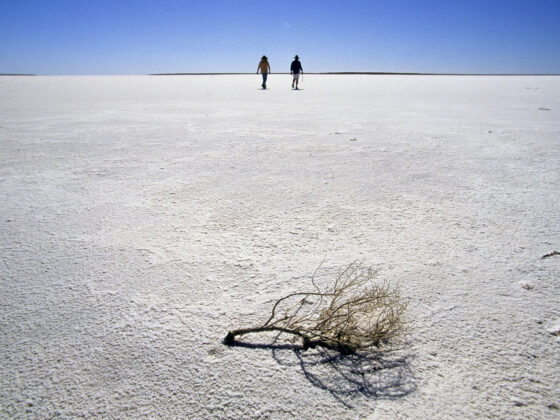What do most foreigners know (and fear) about Australia? Mostly our venomous snakes, spiders and of course the box jellyfish whose stings can be fatal. There’s certainly a shared opinion that all the animals in Australia can kill you. However, we aren’t entirely defenceless when it comes to animal bites. Here’s what you can do if you find yourself between the teeth of an Aussie animal.
Don’t panic and take immediate action
Easier said than done, we know. However, staying calm after being bitten means you can act faster than if you’re flailing your arms around and screaming. Though my first instinct would be to yell, the sooner you get the bandage on and remain still and calm, the better. If you do manage to rein it in, your body will have a slower reaction to the venom.
Brush up on your knowledge of the species
Ever seen those posts on Facebook accompanied by a photo of people asking “what kind of spider is this?!” Turns out, this kind of information is very valuable if you come to find yourself bitten one day. When it comes to snakes and spiders, some bites require immediate first aid, depending on the species. These include brown snakes, taipans, funnel web spiders and mouse spiders. Once you know the type of bite and venom you’re dealing with, you can act more appropriately for the situation at hand.
It’s also important to decipher myth from fact. Many people believe that only big snakes are dangerous. However, you may be surprised to learn that even newly-hatched reptiles have enough venom to cause lethal envenoming if they’re from a dangerous species. Snake bites can also be missed, especially in long grass. If you begin to develop symptoms such as headaches and vomiting, check your body for bites. Even the tiniest of marks could be the remainder of a bite and mean you need medical attention. Giving yourself a once lookover each night before bed is a good way to keep track of any changes that may occur while you’re on your trip.
Apply pressure to the wound
A pressure-immobilisation bandage is going to slow venom movement within your body after you’ve been bitten by a snake. As you’d expect, this bandage needs to be placed firmly on the bite site as well as the rest of the limb that surrounds the bite. This means if the snake has nabbed you on the arm, the bandage needs to cover the bite and your arm. Make sure then to keep the affected arm straight and the rest of your body as still as possible.
The same advice goes if you’re bitten by a funnel web.
Get yourself a Survival Kit
The Survival Snake Bite Kit is something we’d recommend every weekend warrior to have in their vehicle when they hit the off-road track. It never hurts to be prepared. If you find yourself in a situation where a kit is required, it may well save your life! The Survival Snake Bite Kit contains exactly what its name suggests. It’s complete with the first aid contents that you’ll need to have to assist treatment of a venomous snake or Funnel-web spider bite. As mentioned above, pressure will need to be applied to the wound via a bandage. This kit contains 2 SMART Bandages which are heavy-duty, reusable and washable. You’ll also find a permanent marker, cotton gauze swabs, an emergency blanket, nitrile gloves and a splint.
In the heat of the moment, your mind may blank, which is why this kit also contains instructions on the correct snake bite bandage technique. You can have all the gear plus the right idea with this handy kit.
Here’s how to apply the SMART Snake Bandage:
Although going bush is one of our favourite adventures, we have to keep in mind that this is where animals reside. We’re entering their homes and therefore can’t be too shocked if we encounter one. The best thing to do is be aware and prepared if medical action is needed. The best-case scenario is you were equipped with the knowledge but didn’t have to use it. If the worst occurs, at least you know you can handle it.













